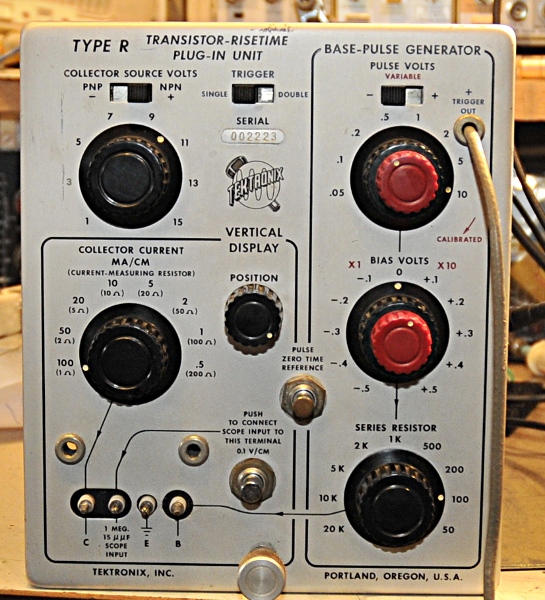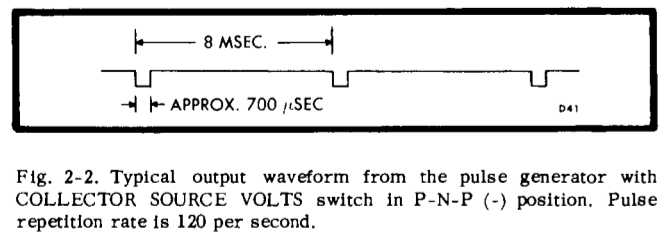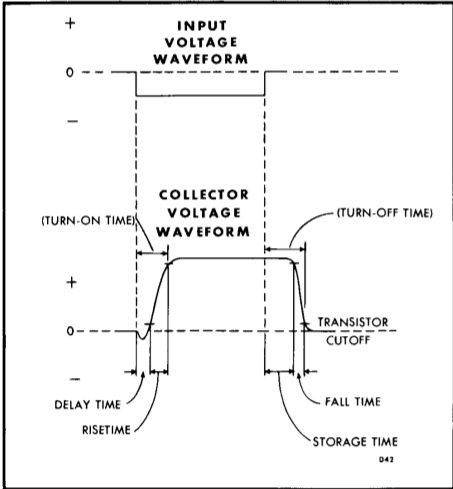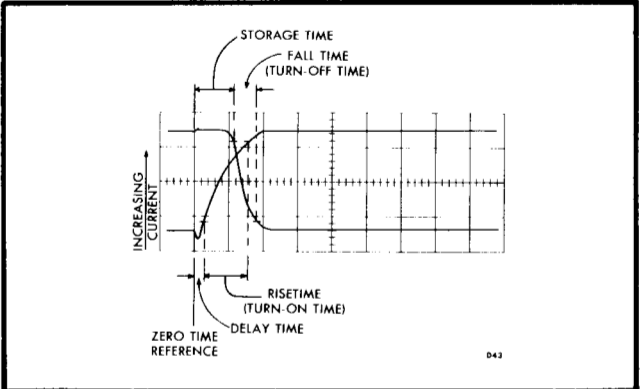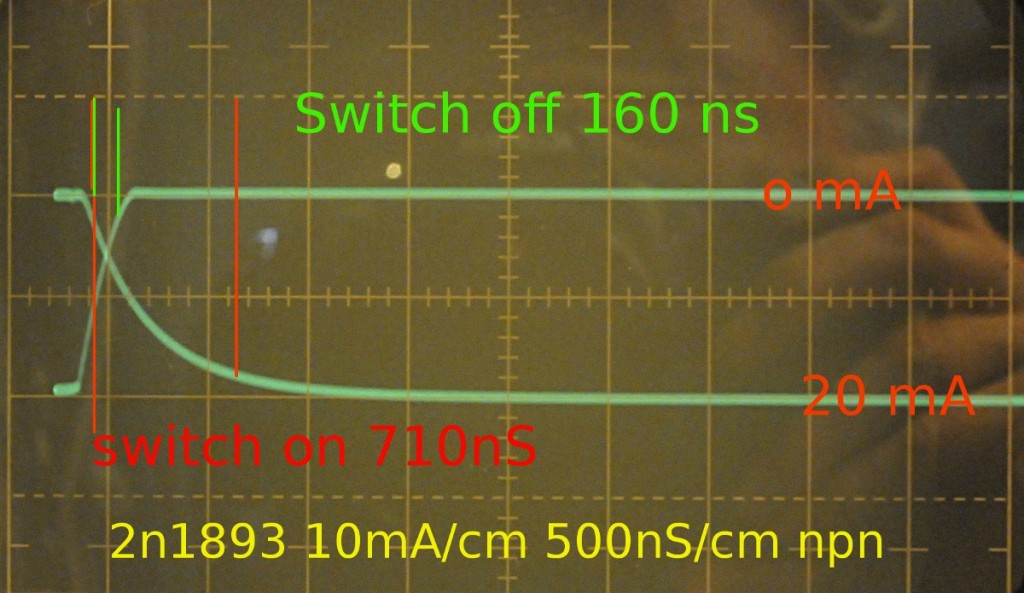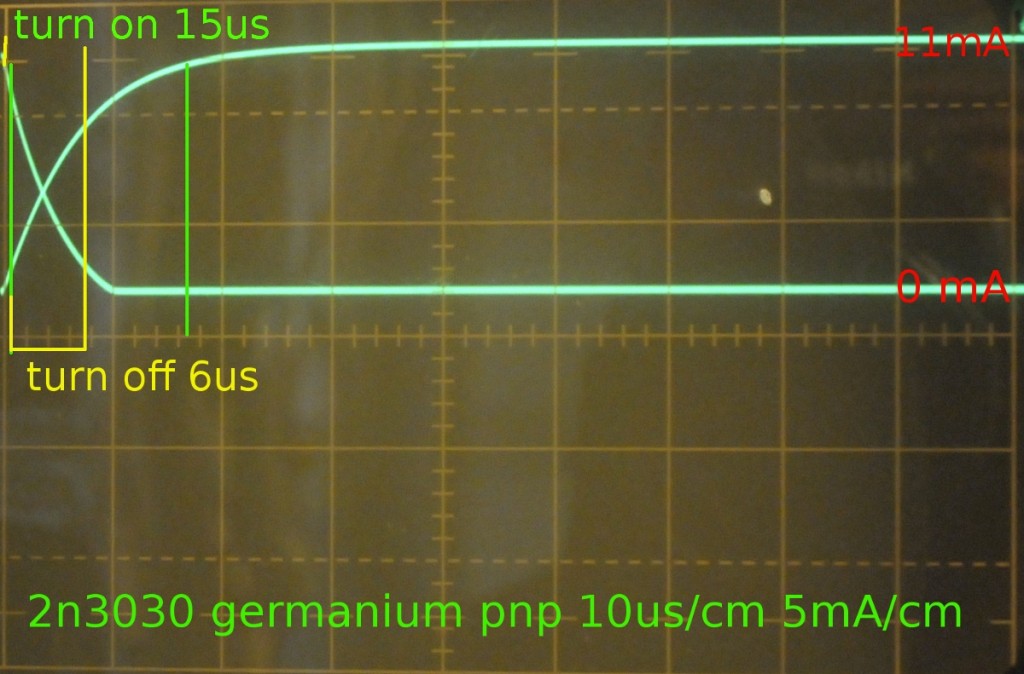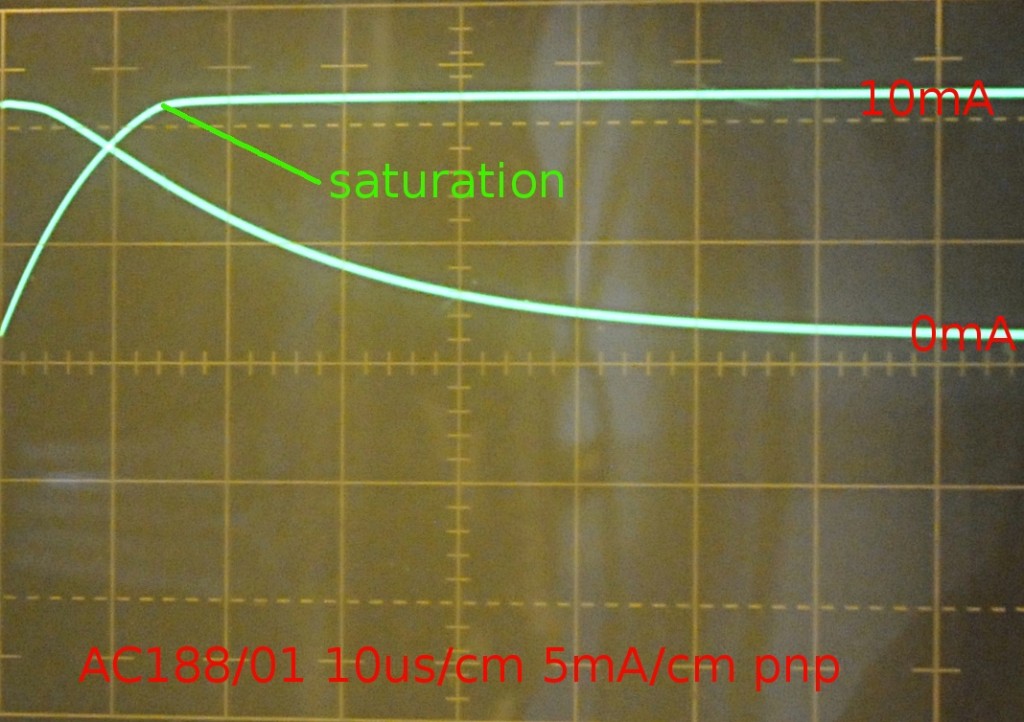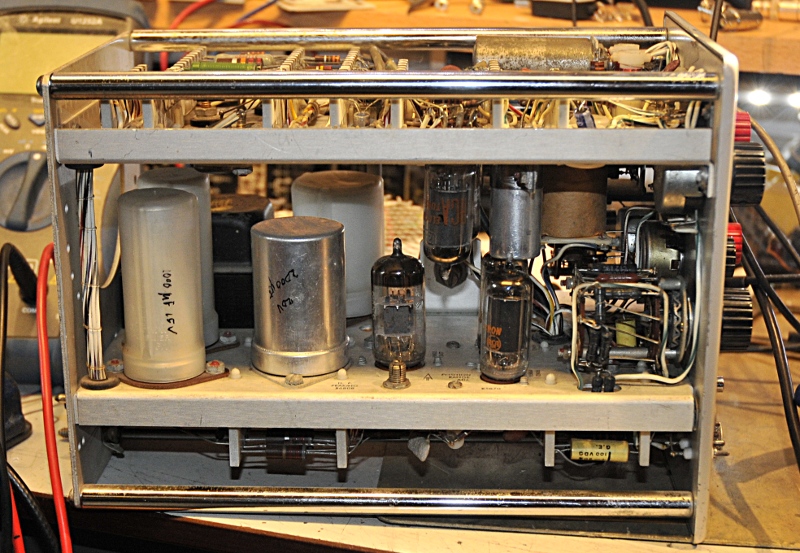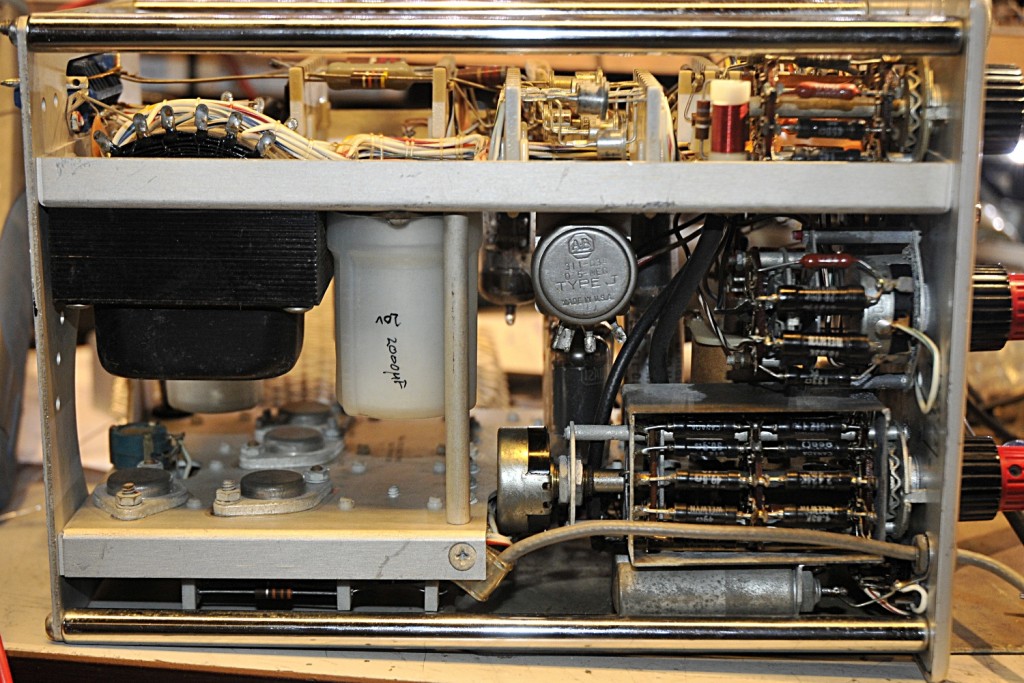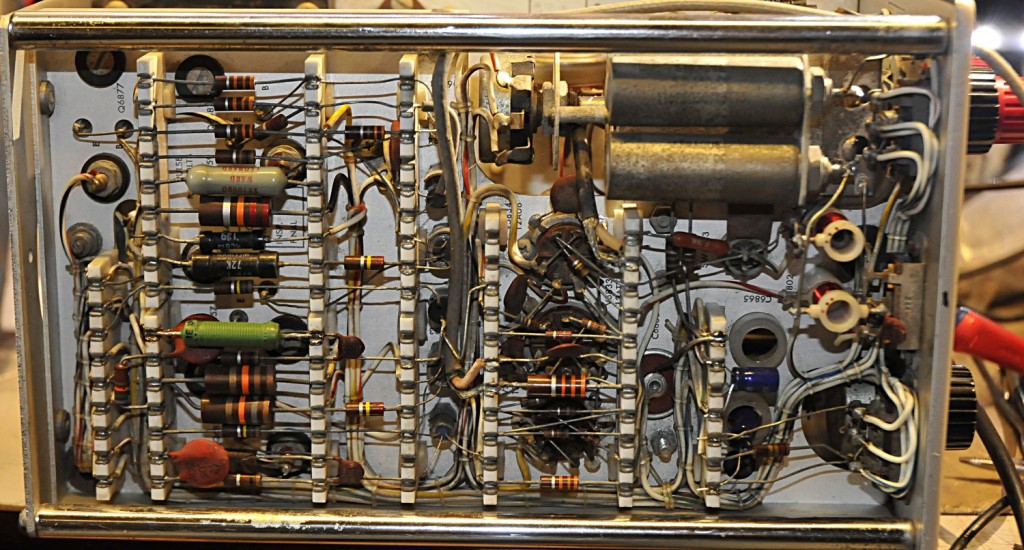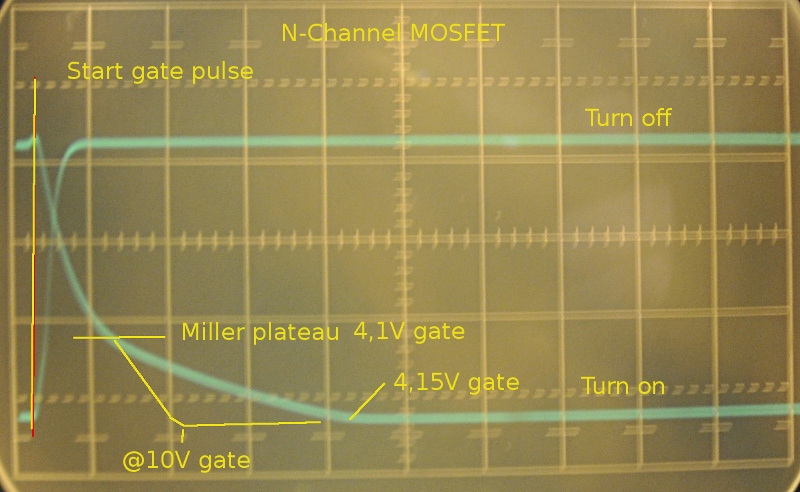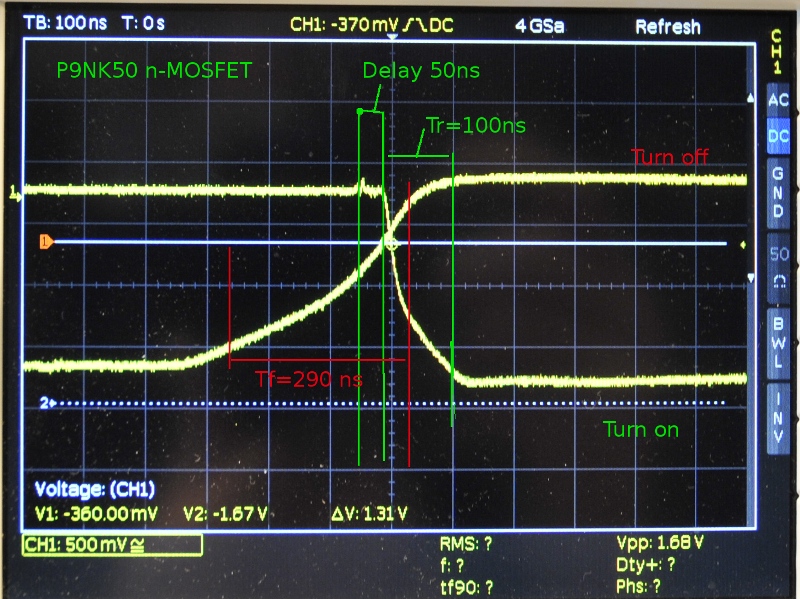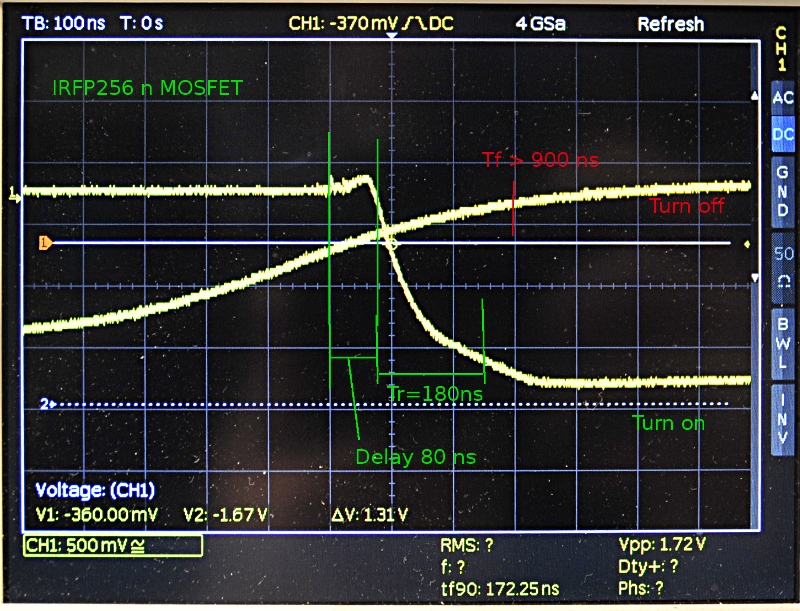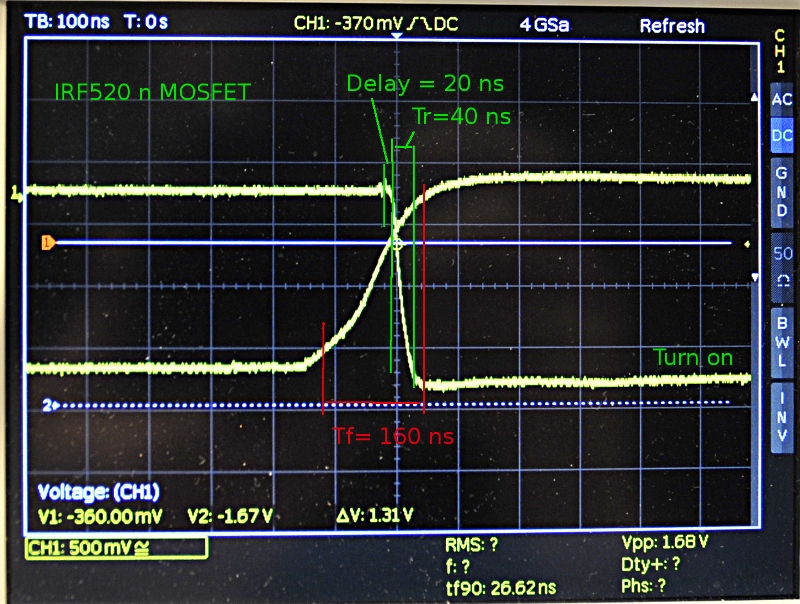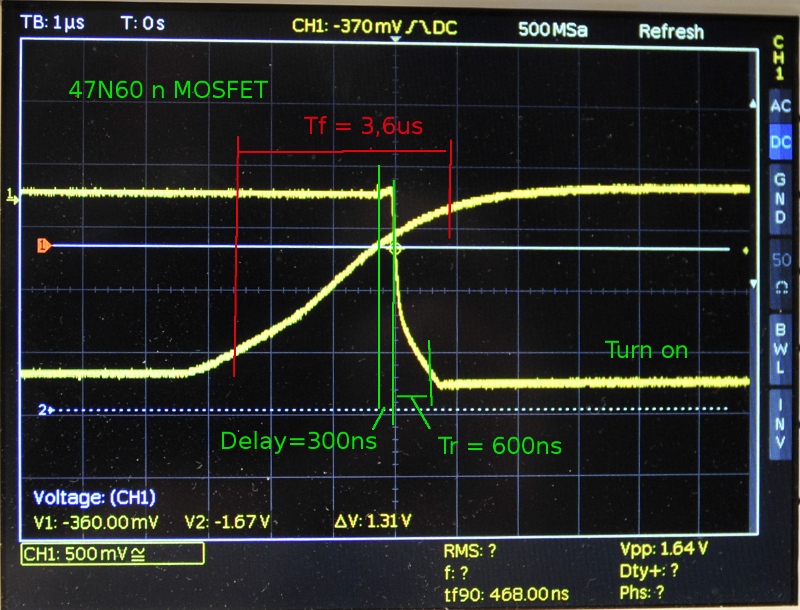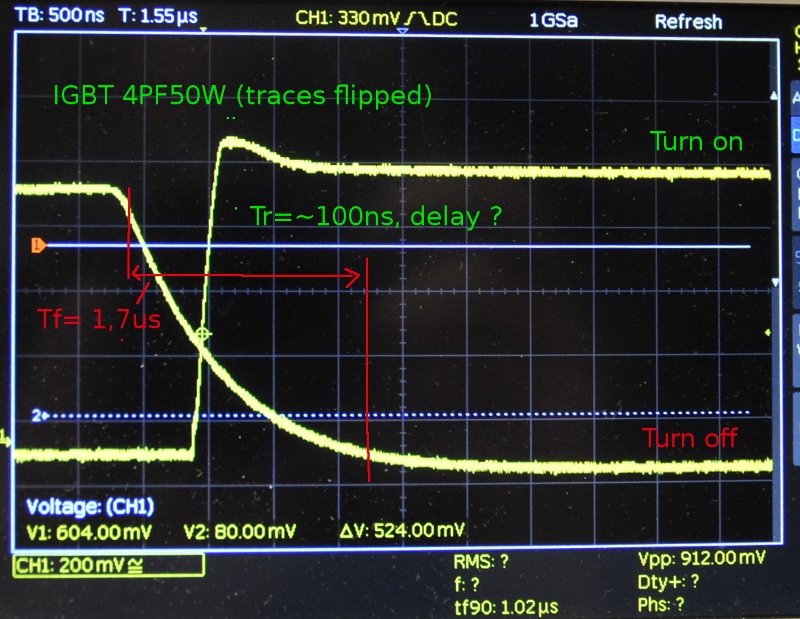This plugin dates from the early days of transistors. It is a powersupply and mercury switch driven pulsgenerator. Through use of the dual trigger function it displays two curves at the same time. It can be used in grounded emitter or grounded base setup. The plugin makes it posible to test a transitor as signal amplifier in for instance class A or B ect. Or as switch and look at its setteling and swichtime, saturation ect.
It displays the delaytime (in a scope with a delayline) risetime, storage time and fall time as result from a fast < 5nS pulse on the basis of the transistor. Pulse amplitude, Vb, Vc is adjustable. You can select an collector resistor. It can supply 400mA current.
For pnp transistors a rising trace is an increase in current, for npn the picture is inverted.
The pulser makes 1V pulses on top of 2.8V bias, the currentsense resistor is 10 Ohm giving 10mA/cm And basis resistor is 1K, PSU voltage is 11V. The transistor has a 710nS switch on time, Delay is around 140nS and no measurable storage time.
You see here a much slower timebase. The speed difference is very big. It needs 15ns to turn on and 6 to turn off. 5mA/cm, Vc=8V, -3V bias -1V pulse, 1K resiustor
Here the transistor is used to switch. You see the point of saturation. Turn on is much faster this way, turn of is terrible slow.
This plugin was in storage for a long while and had seen a lot of moisture. Three tubes were missing, three caps dead and one resistor. Some switches were stuck by oxide.
It is a hybride construction.
It is also possible to test MOSFETS but because the high speed of the MOSFET and “slow” 547 scope I made the pictures by connecting the R plugin to the Hameg. But first a picture from the original. The gate puls is 0-10V and 600 uS long. the frequecy is 100 kHz and Vd=around 16V. The traces are the Vds current and because it is an N channel the turn on is the down going slope. Only the IGBT has an inverted trace.
The original scope. I used 4,15V gate. The thresshold was around 3V. Then it goes linear to 4,1V. and then in 50mV it draws max current. Increasing the gate to 10V makes the risetime a lot faster but does increase current.
This one I use in my boostconverter. It is 500V, 7.2A and 0,72 Ohm. Delay is stated 17 ns and Tr = 20 ns at 250V and 3,6A Vgs=10V . So it looks like using them at low voltage and low current slows them down a lot.
The IRFP56 is a huge FET, it is stated 275V and 20A but a huge 150W. It is stated 19-29 ns Delay and a 84-130 ns Tr So it slows down a bit when not banged at 125V and 22A into 6 Ohms but still close.
This is not an extreme FET, the delay is stated as 50-75ns and the delay 10-15ns for 50V and 5A at 10Vgs. On 15V and 100 mA it is as fast as the datasheet.
This is a 650V 47A giant version, Tr according the datasheet is 27 ns and Toff delay and T fall is 120-177nS but that is at 47A and Vdd-380V. So at low voltage and about 100mA like here it is not even close. Big is not allways better.
An IGBT, 900V and 28A (and 200A pulses) made for welding and smps use. It can dissipate 200W. A big guy. Turn on delay 29 ns and Tr 26 ns (so together about 60 ns) at 720V and 28A but at a Vge of 15V and my limmit was 10V. Turn off is upto 390 ns. The delay is not to see because the timestamp is not visible in the overshoot. Like the other big guys this one is slower, but not as slow as the big mosfets.

